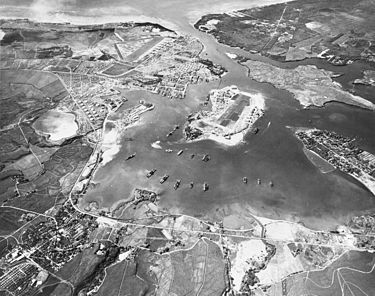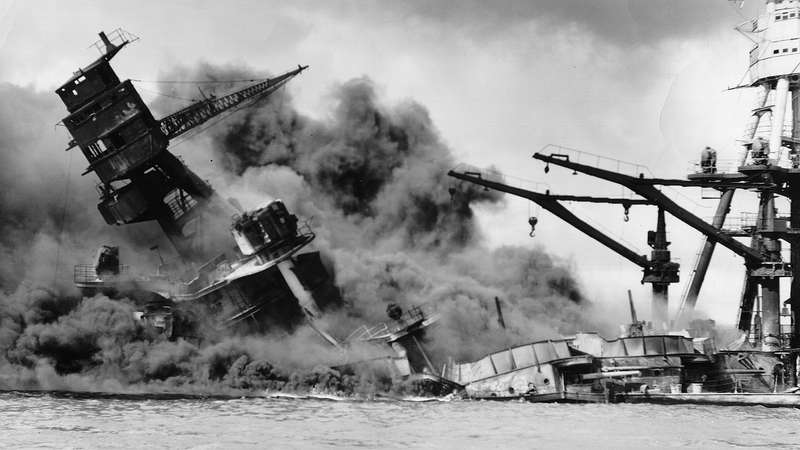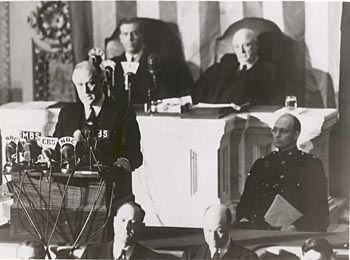Table of Contents
The Pearl Harbor attack is one of the most important events in the history of the United States. Why? Because the United States formally entered World War II post the attack after being neutral for almost two years since the war began.
It has been etched in the minds of the Americans who lived through that time. A brutal attack by the Japanese Naval Air Service destroyed much of the United States’ Pacific Fleet docked up at the US naval base of Pearl Harbor in Honolulu, Hawaii. The attack led to the death of approximately 2,403 Americans and left approximately 1178 wounded.

Courtesy – Wikipedia
Relationship between the United States and Japan
Japan went through an industrial and military revolution in the late 19th and early 20th centuries. A limited amount of natural resources was one of the primary reasons why Japan invaded foreign territories. Without the resources, Japan’s economy would have sunk.
The US and Japan were allies in World War I and were also trading partners. But, Japan’s aggression and thirst for aggregating power did not go down well with the United States. America condemned Japan when it invaded Manchuria in 1931 and continued its expansion in China.
The massacre of Nanjing was one of the major turning points in the relationship between the US and Japan. The mass rape and mass killing of people in Nanjing were condemned by the western world. To help China and curb Japan’s expansion, military aid was sent by the United States, the UK, and France.
Sanctions on Japan
Another incident that angered the US was the Japanese attack on its gunboat Panay during the Second Sino-Japanese war. The US immediately halted the export of airplanes, air-fuel, aviation parts, and other machine tools to Japan. But, this did not affect Japan.
Japan invaded French Indochina to isolate China from the rest of the world. Ultimately, the US put oil sanctions on Japan in 1941 thinking that the move should be enough to stop Japan. This was a big decision as almost 80%-90% of Japan’s oil came from America. The sanction on oil meant a direct attack on Japan’s economy and also its military operations. In retaliation, Japan brewed plans to invade more European colonies of Southeast Asia.
The Negotiations between the United States and Japan
The negotiations between the United States and Japan started in 1941 after the United States put sanctions on Japan. Japan’s government put forth a proposal to withdraw from China and Indochina with pro-trading policies that were rejected by the US government. The US was adamant about holding talks only after an agreement was reached between the two countries, which never happened. The Japanese government collapsed shortly after as the Japanese military rejected the idea of the withdrawal of troops.
A final settlement agreement was sent by Japan to the United States on 20th November 1941 where it offered to withdraw from southern Indochina and cease military operations in Southeast Asia. The condition was that the U.S., the UK, and the Netherlands lifted all the sanctions on Japan and ceased aid to China. The United States responded with the so-called “Hull Note” on 26th November 1941. It asked Japan to evacuate China and sign peace pacts with a number of countries. Japan rejected the proposal thereby putting an end to the negotiations.
The Japanese naval and air service left for the attack on Pearl Harbor the same day the “Hull Note” was delivered.
The attack on Pearl Harbor by Japanese forces was a preventive measure to cripple America’s Pacific fleet so that it could not interfere with Japan’s operations in Southeast Asia.
Japan, simultaneously, also planned to attack the American colonies of the Philippines, Wake Island, and Guam, and the British colonies of Malaya, Singapore, and Hong Kong.
Planning and Objective of The Pearl Harbor attack
The preparation to attack Pearl Harbor started pretty early in 1941. The final authorization of attack was given by the Japanese Emperor Hirohito on 1 December 1941.
There were certain objectives for attacking Pearl Harbor. The foremost was of course to cripple the US fleet units in the Pacific thereby giving Japan a free hand in invading Southeast Asian territories. Next was to destroy as many American battleships as possible because they were considered the most dangerous naval vessels and could have been crucial in the US’ offensive. Another motive was to demoralise the US and soften its stance on the sanctions imposed on Japan.
On the flip side, there were some disadvantages of attacking Pearl Harbor at that time. The battleships and other fleets were in shallow waters so it would be easier for the Americans to salvage them. Most of the officers were expected to be on leave and not on board. The last and the most important disadvantage was the non-availability of the aircraft carriers which if destroyed would have postponed America’s offensive by a year at least.
Japanese, nevertheless, went ahead with their operation.
The Pearl Harbor Attack
It is said that the Japanese government sent a note to the Japanese Embassy in Washington highlighting the end of talks between the two nations. The attack on Pearl Harbor began much before the note was delivered to the President due to unavoidable reasons. The other theory states that the US intelligence had already deciphered the message much before it was delivered but no action was taken. The note stated of the ending of the relationship and tie-ups between the two countries, it never stated of war. Nevertheless, the war was inevitable as per the US officials and servicemen.
The attack on Pearl Harbor was planned in two waves or phases. The primary targets were the battleships and any carriers. While the aircrafts were the secondary targets to avoid any retaliation from Americans.
The first wave of attack consisted of 184 Japanese airplanes that were launched from the north of Oahu. The US army was able to detect the movement of aircrafts on the radar but misinterpreted it for their B-17 air bombers from the US.
The attack began on 7th December 1941 just before 8 AM Local Time. The Japanese naval air service launched bombs and torpedoes on the aircrafts and battleships causing considerable damage. A group of dive bombers attacked the airbases – Hickam Field and Wheeler Field. The second wave of 171 airplanes attacked Bellows Field near Kaneohe and Ford Island.
Almost 2000 sailors were killed in the attack and 188 aircrafts were destroyed. Among the dead were the sailors, soldiers, marines, and civilians.
The Damage
Eight battleships – USS Arizona, USS Oklahoma, USS West Virginia, USS California, USS Nevada, USS Pennsylvania, USS Tennessee, and USS Maryland were severely damaged. USS Arizona and USS Oklahoma were the most affected and could not be saved, while the other six battleships were repaired and returned to service.

Courtesy – Britannica
Most people were killed due to the attack on USS Arizona when the bombs penetrated its forward magazine. The casualties was close to 1200 and almost 50% of the fatalities.
Apart from the battleships, many American destroyers, cruisers, ships, and submarines were also severely damaged.
On the Japanese side, 64 servicemen were killed and 29 airplanes were lost or destroyed by the minimal offensive by the American troops.
Mistake by Japan
Though the Japanese navy wreaked havoc on Pearl Harbor, they did one mistake. They left the navy yards, oil tank farms, and submarine bases untouched. This proved to be a boon for the US as it was able to quickly recover from the damage (aircrafts and battleships were repaired) and launch the offensive against the Japanese within the next few months.
If the bases would have been destroyed by the Japanese forces, it would have become very tough for the US to launch attacks on Japan. It would have taken the US a year to recover from the damages.
The Consequence of attack on Pearl Harbor
Japan also attacked the Philippines just hours after the Pearl Harbor incident as per the plan to attack the colonies of the United States and the United Kingdom.
The very next day (8th December 1941) after the Pearl Harbor attack, the US declared war on Japan and formally entered World War II. President Roosevelt delivered his famous infamy speech (the Pearl Harbor speech) to Congress and asked for the declaration of war on Japan which was obliged.

Courtesy – Wikipedia
Japan had already sided with Germany and Italy in the war, therefore both the nations too declared war on the United States on 11th December 1941. The United States Congress issued a declaration of war against the two nations on the same day.
The United Kingdom who was an ally of the United States too declared war on Japan, Italy, and Germany a few hours after the attack on Pearl Harbor. The major powers were now part of the war.
Another consequence of the attack was the relocation of Japanese-Americans to the internment camps. The Japanese-American leaders were also rounded up and sent to the high-security secret camps.
In the British Columbia province of Canada, a resolution was passed to remove the Canadians of Japanese descent and restricting their return back in the province.
Conclusion
The relationship between the US and Japan took a severe blow after the Pearl Harbor attack. Six months after the attack, the Battle of Midway happened in the Pacific between the US and the Japanese navy. The US defeated the Japanese navy and also inflicted damages on their aircraft carriers, battleships, and other fleets to a point where they were irreparable. The Battle of Midway is considered one of the most befitting response in the history of naval warfare.
Also, check out our poem on Pearl Harbor.
CURATED & WRITTEN BY
AYUSH PANDYA
(AUTHOR – THE UNPRECEDENTED CULT)